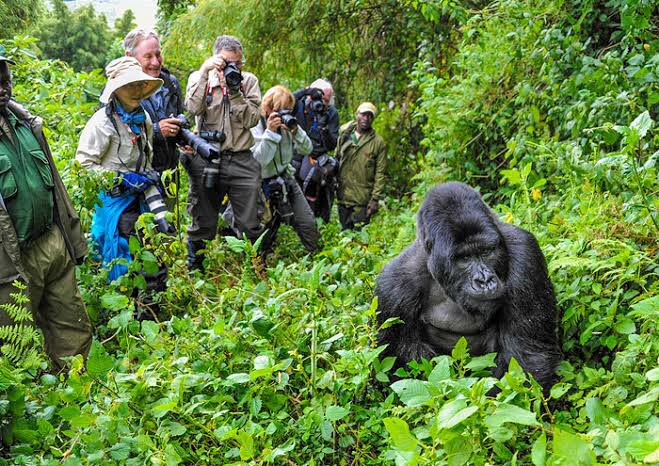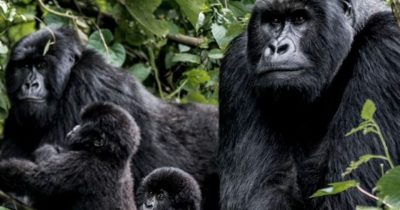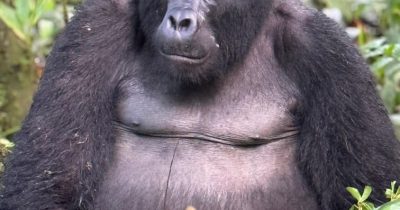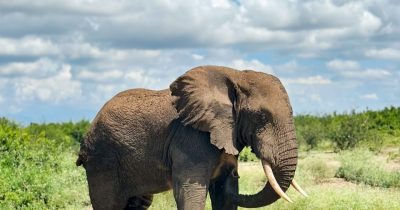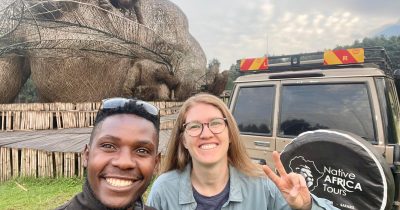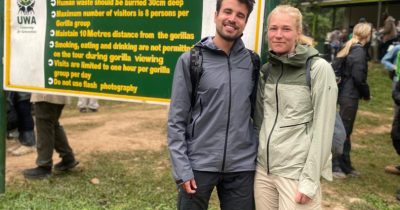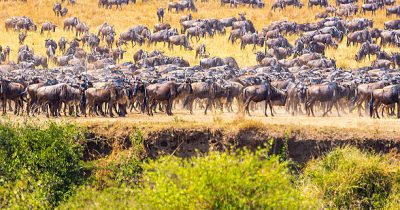Chances of Seeing Gorillas in Bwindi Impenetrable National Park
What are the chances of seeing gorillas in Bwindi Impenetrable National Park? Mountain Gorilla trekking is a thrilling experience. The chances of seeing these majestic Giant Apes in their natural habitat are genuinely jaw-dropping. Besides the fun of a gorilla trekking adventure in the jungle of Bwindi Impenetrable National Park, most people who come on a Gorilla Trekking Tour have one obvious goal in mind: getting up close and personal with a vast silverback watching over his family or infants displaying their playful antics. Even Ranger guides get excited about visiting the endangered mountain gorillas in their natural habitat, trying to catch a glimpse of their riveting World, and understanding their interactions with each other (and, if we’re lucky, even with us), so we always hope to have special interactions.
Of course, going on a gorilla tour inherently means that we have no control over what the Giant Apes do, which is how our relationship with Mother Nature should be. It also means that these endangered primates are free to go wherever they want, and it can therefore happen that we can’t find them, no matter how hard we try. In this post, we explain how likely it is to see mountain gorillas on our gorilla safaris, and what we do to maximize our chances of finding these jungle Great Apes.
But what are the odds of seeing mountain gorillas on a gorilla trek? This question is often asked by eager primate lovers and nature enthusiasts alike. This article will explore the factors that influence gorilla trekking odds. From the time of year to the location of the gorilla families, we’ll set realistic expectations for your gorilla trekking adventure.
Sighting success
Many people want to know how often we see the Giant Apes before coming on a gorilla trekking safari. Every gorilla tour is different, and we can’t guarantee a sighting of the endangered mountain gorillas, but to indicate our sighting success. We confidently state there’s a 99% chance of seeing gorillas in Bwindi. Only 1% of gorilla treks don’t result in seeing mountain gorillas in the wild, and when it happens, visitors are offered a refund or given another chance to see the Giant Apes if they want to.

What is done to maximize sighting chances?
How are mountain gorillas spotted?
First, visitors go on gorilla trekking tours because they love these Giant Apes and want to treat them as respectfully as possible. Visitors are expected to converge at the Park Headquarters by 7:00 a.m. for a pre-tracking briefing and registration by Park Rangers. Before this briefing, visitors are entertained for 30 minutes by one of the local community dance troupes.
The briefing begins at 7:30 a.m. and is followed by allocation into one of the habituated gorilla families. Then, at 8:00 a.m., visitors move or are driven to the trailhead (starting point) to search for the gorilla family. Depending on the location of the gorilla family, you have 2-6 hours to find the Giant Apes, and this is followed by one hour of photography and learning about them from the team of experienced Park Rangers.
What do we look out for?
After hours of searching for mountain gorillas, there are sure signs in the dense forest hinting that the allotted gorilla family might be nearby. Most times, this is as subtle as gorilla feces, broken tree branches, and nests from the previous night. Other times, the signs are more obvious, for example, when mountain gorillas show part of their bodies.
Experienced team of trackers
Gorilla trekking is a team effort: it isn’t just armed Park Rangers and guides constantly scanning the dense rainforest for these Giant Apes- a whole team is looking out! The team of trackers that moves into the forest beforehand, Ranger guides are all trained forest biologists, and even armed Rangers are experienced in searching for these Giant Apes. The team’s effort (Park guides, trackers, and armed Rangers), combined with visitors actively helping to listen and scan the jungle, will make gorilla treks successful and unforgettable.
Availability of updated information
Before you venture deep into the forest to search for the endangered mountain gorillas, a team of experienced trackers typically moves into the forest to track and search for the habituated gorilla families. After ascertaining their location and mood, this information is shared with the Park guide via radio to increase the chances of a successful gorilla encounter. This information is significant for preparing for the encounter with the Giant Apes in their natural habitat and deriving the best approach.
Availability of habituated gorilla groups
Bwindi Impenetrable National Park has over 25 habituated gorilla groups distributed across the four trekking regions/sectors—Buhoma (North), Ruhija (East), Rushaga, and Nkuringo in the south of the Park. These gorilla families are entirely accustomed to human presence; hence, they are not timid but relatively comfortable being visited during gorilla treks. These, coupled with other factors, are the reasons for the 99% chances of seeing Gorillas in Bwindi Impenetrable National Park.
Weather and forest conditions
Weather conditions can increase your gorilla watching odds. Rainy weather means mountain gorillas have plenty of food and won’t move deeper into the forest to search for food. Depending on the gorilla family, you might find the Giant Apes after walking in the forest for 30 minutes to one hour. On the other hand, the dry season can make it longer and more difficult (but not impossible) to find the Giant Apes.
What to expect during a gorilla trekking tour
During a gorilla trekking adventure, expect to see more than just the Giant Apes. The jungle of Bwindi Impenetrable National Park is a biodiversity hotspot that teems with life, and you might spot lots of forest birds. Primates (L’Hoests monkeys, Blue monkeys, Eastern chimpanzees, Red-tailed monkeys, and others), and other forest creatures.
To remind you, patience is key. Gorilla trekking can sometimes require walking for several hours, even as much as 6 hours, for the perfect moment to get up close and personal with the Giant Apes.
Best month/s to go for gorilla trekking in Bwindi Impenetrable National Park
For the best gorilla trekking adventures, consider the dry season (June to September and December to February) when rainfall levels are lower and forest trails are more accessible. This time of the year offers clearer days, breathtaking sunsets, and easier access to deeper parts of the forest while searching for the Giant Apes. With drier conditions, forest trails beckon, making it a perfect time for the on-foot gorilla treks.
During Bwindi’s wet season (roughly March to May, and October to November), expect heavy rainfall, muddy and slippery forest trails, and incredible opportunities for gorilla trekking. However, some forest trails might become difficult to maneuver through. However, the rain brings a surge of life, with verdant foliage and blooming flora.
Conclusively, gorilla trekking is more than just spotting a mountain gorilla. It’s about immersing yourself in the dense rainforest environment and learning about its incredible inhabitants. Don’t hesitate to freely engage with the knowledgeable Park rangers and guides leading the group, as they can enhance your understanding of mountain gorilla behavior and the forest ecosystem. Remember, every gorilla trekking experience is outstanding and unforgettable. Embrace the unpredictability and enjoy the moment.
